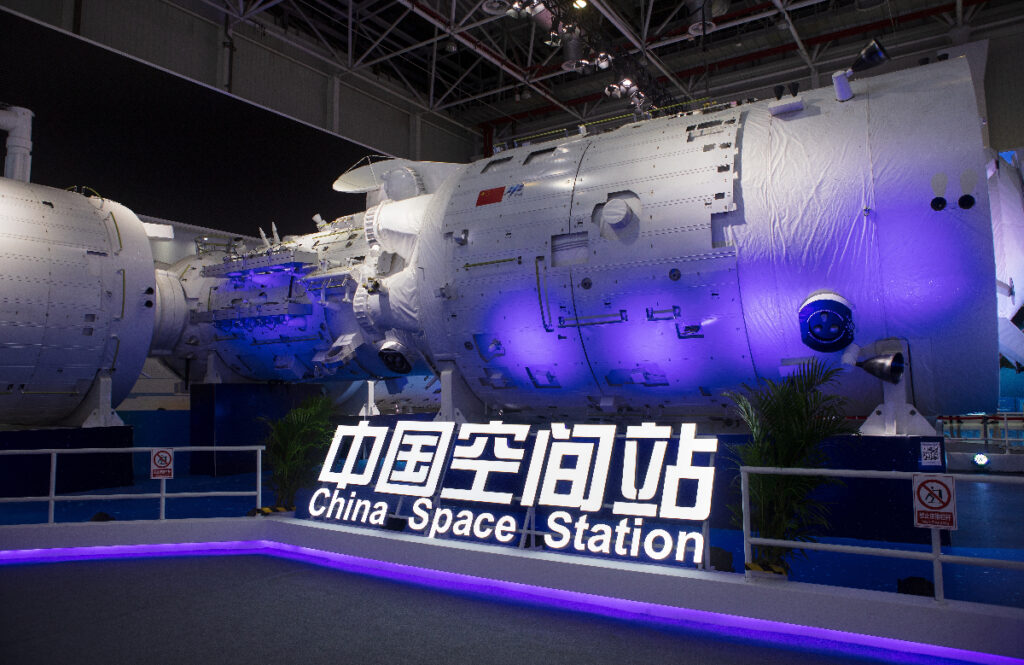Landing Marks Another Milestone in China’s Space Journey
Three Chinese astronauts safely returned to Earth on April 30, 2025, after spending six months aboard the Tiangong space station, marking the successful completion of another chapter in China’s rapidly advancing space program.
The astronauts—Cai Xuzhe, Song Lingdong, and Wang Haoze—touched down in Dongfeng, located in China’s Inner Mongolia region. The return was initially delayed by a day due to adverse weather conditions such as strong winds and reduced visibility. Despite the brief postponement, the Shenzhou 17 return capsule descended flawlessly, floating beneath a red-and-white parachute before landing gently on the fringes of the Gobi Desert.
The retrieval team quickly reached the capsule, opened the hatch, and greeted the crew with applause. Medical checks confirmed the astronauts were in good health, though slightly fatigued—a common effect after prolonged weightlessness. This mission, part of a broader rotation plan, has strengthened China’s position as a major player in human spaceflight.
Historic Spacewalks and Scientific Research
During their extended stay aboard the Tiangong space station—which means “Heavenly Palace” in Chinese—the crew conducted a wide range of scientific tasks and maintenance duties.
A major highlight was a record-breaking nine-hour spacewalk performed by Cai and Song, the longest in China’s space history. The spacewalk focused on the installation and testing of exterior equipment, including solar array upgrades and thermal system enhancements.
Inside the station, the astronauts also led multiple experiments in areas such as fluid physics, biological processes under microgravity, and materials science. These experiments are not only valuable for scientific advancement but also for the preparation of longer and deeper space missions in the future, including lunar and Mars exploration.
This mission’s success reflects the increasing complexity and maturity of China’s manned space operations, demonstrating that the country is capable of maintaining a long-term human presence in space.
New Crew Takes Over for Continued Operations
Before returning home, the Shenzhou 17 crew handed over control of the Tiangong station to a fresh team that arrived aboard Shenzhou 20. This seamless transition is part of China’s rotational model, ensuring the station is continuously staffed and productive.
The incoming crew will carry out additional experiments focused on space medicine, advanced propulsion systems, and plant growth in orbit, as well as monitor the long-term effects of space radiation. They also brought along critical supplies, tools, and new experiment modules.
With this smooth crew exchange, China reaffirmed its commitment to space station operations, showcasing its logistical capabilities in orbital resupply and astronaut rotation—key components of any sustainable space program.
Growing Global Presence and Future Lunar Goals
China’s space program has made steady progress over the past two decades. The Tiangong space station, now fully assembled in orbit, was developed after China was barred from participating in the International Space Station due to U.S. national security concerns. The Chinese space station is now one of the few active human outposts in low Earth orbit.
Led by the China Manned Space Agency (CMSA) and backed by the People’s Liberation Army, the Chinese space program has celebrated several milestones: a successful Mars rover landing, a probe on the far side of the Moon, and now, consistent manned missions in Earth orbit.
Looking ahead, China has expressed ambitions to land astronauts on the Moon by 2030, with lunar base planning already underway. If successful, this would place China as the second nation—after the United States—to land humans on the lunar surface.
Moreover, China has invited international participation in Tiangong’s research activities, indicating a broader interest in global space cooperation despite geopolitical tensions.


